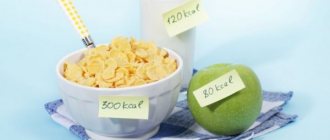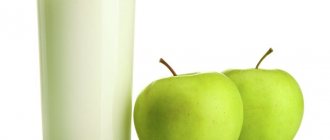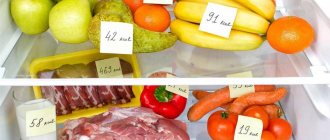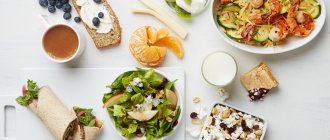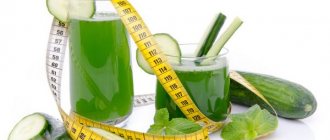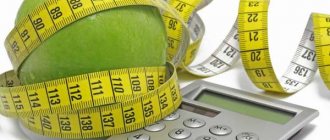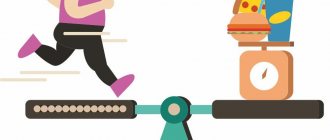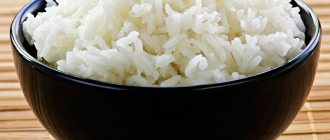What are these “Nutrition Facts” for a 2000 calorie diet?
Some new Nutrition Facts labels may have text that reads:
The %DV value tells you how much a nutrient in a serving of food contributes to your daily diet. 2000 calories per day is used for general nutrition advice.
If you are trying to use a label to calculate the percentage of healthy foods, this note may be misleading. Does this mean you should consume 2000 calories a day? Or is there a better way to use this information?
The goal of a 2000 calorie diet?
In an effort to provide the most useful nutritional information for consumers, the U.S. Food and Drug Administration (FDA) uses the 2,000-calorie diet as an example on the Nutrition Facts Label, which contains information about Daily Values and Percent Daily Values ( %DV). This is not a recommendation to eat 2000 calories. It also doesn't mean that a 2,000-calorie diet is necessarily better or worse than, say, a 1,200-calorie diet or a 2,500-calorie diet.
So why does the FDA use the 2,000 calorie figure on the label?
Many average American eaters will have a daily calorie intake in this approximate range.
Using this figure, the nutritional information provided is likely to be useful to a wide audience. For example:
- A moderately active 30-year-old woman will consume about 2,147 calories to maintain her weight.
- A slightly active 40-year-old man would consume about 2,195 calories to maintain his weight
- A petite, very active 25-year-old woman would consume about 2,143 calories to maintain her weight
- A tall, sedentary 70-year-old man would consume about 1,828 calories to maintain his weight.
List of foods for a 2000 calorie diet
Your daily calorie needs depend on your body size, your weight goals and your activity level.
A person who is trying to lose or gain weight will adjust their daily caloric intake to achieve their specific health goals. To find out how many calories you should consume each day to maintain your weight, you should do some simple math or use an online calorie calculator.
Many weight loss plans are based on a 1200 calorie per day diet for women and a 1600 calorie per day diet for men.
Useful tips
- Determine how many kilograms you need to lose and move towards the goal, while keeping a diary of nutrition and workouts;
- Do not eat more than 3-4 ingredients at one meal - too complex composition of dishes makes digestion difficult;
- Use calorie and nutritional calculators;
- Eat at least 4-5 times a day: split meals promote better absorption of food and do not overload the gastrointestinal tract;
- To maintain a fractional diet, you can prepare food in advance and take it to work in containers;
- Drink clean water at the rate of 30 ml per kilogram of weight;
- Go to the store with a grocery list and don’t buy anything more than planned;
- Do not keep prohibited foods and drinks in the house;
- If you go to a cafe or to a celebration while on a diet, choose dishes from approved foods;
- Do not eat at night or before bed, and if you feel very hungry, drink a glass of water or herbal tea;
- Having lost about 5 kilograms, recalculate the caloric content of your diet, reducing it in proportion to your weight loss;
- Give preference to boiled, baked and steamed foods;
- Use the “cheat meal” technique: it allows you to replace one of your meals once a week with something tasty and forbidden (for example, a cake or a piece of cake);
- Maintain a sleep-wake schedule, go to bed and wake up at the same time, devoting at least 7-8 hours of sleep per day;
- Avoid alcohol, as alcohol stimulates the appetite;
Having decided to normalize their weight, people often face ridicule and disbelief. Limit communication with negative friends and colleagues and remember that your health depends on your desire and willpower.
Menu for a 2000 calorie per day diet
A sample meal plan for 2000 calories a day might look like this:
Breakfast (about 500 calories)
- eggs fried or scrambled
- slice of whole wheat bread
- tablespoons peanut butter
- half a grapefruit or a small glass of juice
Snack (100 calories)
One medium apple
Lunch (about 650 calories)
- Turkish sandwich on rye bread with mayonnaise
- Carrot and celery sticks with hummus
- One medium chocolate chip cake
- One glass of 2% milk
Snack (100 calories)
One small snack bar
Dinner (650 calories)
- Grilled Salmon (4 oz) with Lemon
- Small baked potatoes with butter
- Steamed broccoli
- One cup vanilla ice cream
Casual is a women's magazine about fashion, style and beauty.
The secret of success always lies in the determination to achieve the desired result. Following this diet
, the feeling of slight hunger is difficult to overcome only at first.
If you are persistent, you will quickly get used to your diet, and a feeling of lightness, vigor, good mood and the knowledge that you were able to overcome yourself, as well as noticeable weight loss, will be your reward. The degree of caloric restriction depends on the degree of obesity.
If body weight is 20% higher than normal, then the calorie content of the diet should be reduced by 20%. For example, if the daily norm is 2500 kcal, then in order to lose weight you need to get 2000 kcal from food. This diet is easy to follow and does not make you hungry.
By combining this diet
with increased physical activity, you can lose up to 1.5-2 kg in a month.
Here is an approximate daily set of products providing about 2000 kcal:
Focusing on these products (or replacing them with equivalent ones), you can create a menu for one day, for a week, for a month.
The longer you stick to this diet, the better. We offer a monthly diet
developed by Polish specialists. This diet does not give you the feeling of constant hunger; it is quite varied and includes a lot of vegetables and fruits. Depending on the time of year, their selection varies. In winter and spring, for example, when there are few fresh vegetables and fruits, there is sauerkraut, canned vegetables and fruits, and juices. Remember that you should consume no more than 3-4 glasses of liquid per day. Menu 1 and menu 2 should be alternated every other day.
An approximate daily set of products providing about 2000 kcal
Milk and lactic acid products 400 g Lean meat 150-200 g Low-fat sour cream 30 g Low-fat cottage cheese 100 g Low-fat fish 100 g One egg every other day Vegetable oil 25 g Butter 10 g Fresh cabbage 300 g Carrots, cucumbers, tomatoes and other vegetables 300 g Apples 200 g Rye bread 200 g
Sample menu for a month
First week: 1st option
First breakfast
: a glass of warm milk with a spoon of honey, a stale bun.
Lunch
: a glass of tea, 2 pieces of black bread, thinly brushed with butter, with lettuce or other greens.
Dinner
: vegetable soup, a piece of lean beef, 2-3 potatoes, fruit salad with sugar and lemon juice.
Afternoon snack
: 2 tomatoes or a glass of tomato juice, crackers.
Dinner
: a glass of low-fat kefir, 2 pieces of black bread, thinly brushed with butter and sprinkled with parsley.
First week: 2nd option
First breakfast
: a cup of tea, a piece of black bread sprinkled with parsley.
Lunch
: a glass of kefir, stale bread, radishes, slightly salted.
Dinner
: broth, boiled fish, 2-3 potatoes sprinkled with parsley, green salad.
Afternoon snack
: fruit or fruit juice (1 glass), 1 biscuit or cookie.
Dinner
: a glass of milk, 2 slices of bread with honey.
Second week: 1st option
First breakfast
: a glass of fruit or vegetable juice, 1 cracker.
Lunch
: 1 piece of black bread, a little butter and feta cheese (cheese), a glass of tea.
Dinner
: vegetarian soup, meat cutlet, carrot salad, jelly.
Afternoon snack
: fruits, cookies.
Dinner
: kefir, stale bread with jam.
Second week: 2nd option
First breakfast
: a glass of tea with milk, a piece of black bread with honey.
Lunch
: 2 pieces of black bread with meat, 2 tomatoes, a glass of tea
Dinner
: borscht, boiled fish, 2 potatoes, green salad.
Afternoon snack
: kefir, crackers.
Dinner
: a glass of tea, 2 pieces of low-fat cheese, radishes.
Third week: 1st option
First breakfast
: a cup of coffee, a piece of black bread with honey.
Lunch
: kefir, a piece of black bread with butter, a soft-boiled egg, radishes.
Dinner
: mushroom soup, steak or cutlet, vegetable salad, glass of juice.
Afternoon snack
: fruit, cracker.
Dinner
: a glass of milk, a stale bun, cottage cheese.
Third week: 2nd option
First breakfast
: a glass of milk with honey, a cracker.
Lunch
: a glass of tea, 2 pieces of bread with lean sausage, 2 tomatoes.
Dinner
: broth, stewed mushrooms or vegetables, 2 baked apples.
Afternoon snack
: fruit, biscuit.
Dinner
: a glass of tea, a piece of bread with fish, an apple.
Fourth week: 1st option
First breakfast
: a cup of tea, crackers with honey.
Lunch
: 2 pieces of black bread with butter and low-fat cheese, 2 apples.
Dinner
: broth, a portion of chicken with vegetables, 2 tablespoons of mashed potatoes, green salad, jelly.
Afternoon snack
: carrot juice, biscuit.
Dinner
: a glass of low-fat kefir, liver.
Fourth week: 2nd option
First breakfast
: a glass of milk, rye bread with butter.
Lunch
: soft-boiled egg, bread, butter, tea, apple.
Dinner
: a cup of low-fat broth, beans with tomato, 2 boiled potatoes with green parsley, an apple.
Afternoon snack
: kefir, crackers.
Dinner
: radishes, 2 sandwiches with pate.
What are daily values?
Daily Values (DV) are nutrient intake recommendations that are based on recommendations from national health experts.
A list of Daily Values for essential nutrients is provided at the bottom of some, but not all, nutrition labels. Values are for a 2000 calorie diet and a 2500 calorie diet. Based on DV information, a person consuming 2000 calories per day should consume:
- Less than 65 grams or 585 calories from fat
- Less than 20 grams or 180 calories from saturated fat
- At least 300 grams or 1200 calories from carbohydrates
- Approximately 50 g or 200 calories from protein
- Less than 2400 mg sodium
- Less than 300 milligrams of cholesterol
- About 25 milligrams of dietary fiber
Keep in mind that these numbers are guidelines and not a specific recipe for good health or nutrition. A registered dietitian or health care professional can provide nutritional advice to meet your specific health needs. Additionally, pregnant women and children have different recommended values for macronutrients, vitamins, and minerals.
Menu for the week
The menu can be varied to suit your taste, adhering to the list of allowed foods and the daily limit of 2000 calories.
Day 1
| menu | Calorie content, kcal | |
| breakfast | Boiled oatmeal 200 g, raisins 65 g | 350 |
| Tomato juice 250 g | 50 | |
| lunch | Dates 100 g | 300 |
| dinner | A glass of meat broth 250 g | 70 |
| Baked fish 300 g | 270 | |
| Bell pepper salad with herbs 350 g | 230 | |
| Black tea 200 ml | 80 | |
| afternoon tea | Banana and apple | 200 |
| dinner | Cottage cheese 200 g | 200 |
| Berries 200 g | 100 | |
| Tea with lemon 200 ml | 90 | |
| Total calories | 1940 |
Day 2
| menu | Calorie content kcal | |
| breakfast | Low-fat cottage cheese 200 g | 200 |
| Banana | 70 | |
| Honey 2 tsp. | 60 | |
| Kefir 200 g | 80 | |
| lunch | nuts 50 g | 320 |
| dinner | Boiled meat with herbs 200 g | 500 |
| Carrot salad with apple 200 g | 160 | |
| Herb tea | 0 | |
| afternoon tea | Dried apricots 100 g | 215 |
| dinner | Fried fish 100 g | 210 |
| Boiled asparagus 200 g | 40 | |
| Low-fat kefir 200 g | 80 | |
| Total calories | 1935 |
Day 3
| menu | Calorie content kcal | |
| breakfast | Omelette: 2 eggs + 50 g milk with herbs | 200 |
| Lightly salted salmon 50 g | 100 | |
| Orange fresh 250 | 100 | |
| lunch | Live yogurt 300 g | 180 |
| Fresh berries 500 g | 200 | |
| dinner | Fish baked in foil with lemon and herbs 300 g | 300 |
| Cucumber and tomato salad with herbs 250 g | 230 | |
| Black tea | 80 | |
| afternoon tea | Grated vegetables: celery, radish, carrots 600 g | 150 |
| dinner | Smoothie made from 200 g carrots, yogurt, apple juice and one banana | 360 |
| Total calories | 1890 |
Day 4
| menu | Calorie content kcal | |
| breakfast | Buckwheat porridge with water 100 | 100 |
| Natural yoghurt 300 g | 180 | |
| banana | 70 | |
| Tomato juice 200 ml | 50 | |
| lunch | Pistachios 50 g | 280 |
| dinner | Boiled rice 100 g | 116 |
| Fried chicken breast 200 g | 300 | |
| White cabbage salad with vegetable oil 200 g | 210 | |
| afternoon tea | Smoothie: skim milk 200 g, banana 1, honey 2 tsp. | 250 |
| dinner | Seafood 350 g | 300 |
| Salad of cucumbers, radishes, tomatoes and herbs 350 g | 100 | |
| Total calories | 1956 |
Day 5
| menu | Calorie content kcal | |
| breakfast | Buckwheat porridge with butter 200 g | 264 |
| Honey 30 g | 97 | |
| Greek yogurt 200 g | 132 | |
| lunch | Banana | 105 |
| Orange juice 200 g | 72 | |
| dinner | Boiled beef 150 g | 381 |
| Boiled beans 200 g | 246 | |
| Frisee salad 100 g | 14 | |
| Tomato juice 200 g | 42 | |
| afternoon tea | Cottage cheese 1% 200 g | 158 |
| dinner | Boiled halibut 150 g | 324 |
| Boiled cauliflower 200 g | 58 | |
| Kefir 2.5% 200 g | 100 | |
| Total calories | 1993 | |
Day 6
| menu | Calorie content kcal | |
| breakfast | Low-fat kefir 250 g | 100 |
| 2 boiled chicken eggs | 160 | |
| Yogurt 300 g | 180 | |
| lunch | Prunes 100 g | 230 |
| dinner | Rice 200 g | 230 |
| Steamed chicken 200 g | 300 | |
| Lettuce 200 g | 50 | |
| Fresh orange 200 | 80 | |
| afternoon tea | Fruit 300 g | 200 |
| dinner | Cereal porridge 200 g | 210 |
| Salad of fresh vegetables and herbs 350 g | 100 | |
| Tea with lemon 200 | 90 | |
| Total calories | 1930 |
Day 7
| menu | Calorie content kcal | |
| breakfast | Rice milk porridge 200 g | 288 |
| Yogurt 300 g | 180 | |
| lunch | Cashew nut 30 g | 180 |
| Pear (135 g) | 57 | |
| dinner | Crumbled pearl barley porridge 200 g | 212 |
| Turkey cutlets 200 g | 440 | |
| Arugula 200 g | 50 | |
| Apple juice 200 | 84 | |
| afternoon tea | Baked apple 2 pcs. (150 g) | 134 |
| dinner | Seafood 200 g | 170 128 |
| Cucumber 200 g | 30 | |
| Ryazhenka 200 g | 208 | |
| Total calories | 1991 |
This is an approximate menu; it helps you navigate the list of allowed dishes and provides basic knowledge on how to properly create a menu for the week. If your daily calorie count doesn't reach 2,000 calories, you can add another snack.
What is the daily grocery cost percentage?
The Percent Daily Value (%DV or %DV) shows how much a food contributes to the total recommended intake of a given nutrient.
The Percent Daily Value is listed in the column to the right of the nutrition facts label. You can use the % Daily Value numbers to see if you're getting the recommended intake of important nutrients such as fat, protein, calcium and fiber. You can also use the data to make sure you're not getting too much of certain nutrients that should be limited, like saturated fat or cholesterol.
For each nutrient, the label lists the number of grams or milligrams that one serving of that food provides. This information is listed in a column on the left side of the label. For example, you can look at the label of your favorite snack and see that it contains two grams of saturated fat.
But on the right side of the label you will see a percentage. It describes how this food contributes to your recommended intake of this nutrient if you eat 2,000 calories per day.
If you eat 2,000 calories per day, the daily value for saturated fat is 20 grams per day or less. Since your favorite snack provides 2 grams of saturated fat, it will provide 10 percent of your total saturated fat intake for the day. You will see "10%" listed in the "% Daily Value" column.
Different Ways to Use Daily Percentage Value
What if you don't eat 2000 calories a day?
Is daily percentage information useless? Not really. The FDA offers tips on healthy ways to use percentage daily values and other nutrition information, no matter how many calories you eat.
How you can use this information:
Compare products. If you're trying to choose between several different brands or products, you can compare labels to see how each product will contribute to your daily nutritional needs. Just be sure to compare foods with similar serving sizes. Check the serving size at the top of the Nutrition Facts label. Then check the %Daily Value column to see which foods contribute more of the nutrients you need and less of the nutrients you don't.
Checking claims on food packaging. You may see a nutritional claim on the front of a food package that sounds appealing. It is wise to verify these claims by checking the Nutrition Facts label. For example, you may see food advertising that it has “fewer calories.” But in reality, it may not be low in calories.
In general, 40 calories is considered low, 100 calories is considered moderate, and 400 calories or more is considered high if you are consuming a 2,000 calorie diet. If the food you're looking for provides 200 calories per serving, it may have fewer calories than its competitor, but it is not a low-calorie food.
You can also check the nutritional claims. Foods that provide 5 percent of the DV of a particular nutrient are considered low, and those that provide 20 percent of the DV or more are considered high. For example, if your favorite cereal advertises that it is a good source of fiber, you can check the Percent Daily Value on the Nutrition Facts label to see if the product's fiber content is high or low? If the % Daily Value for fiber is 25 percent, then the grain product is high in fiber.
Make food trade-offs to improve your diet. As you become more comfortable using the Percent Daily Value value on the Nutrition Facts label, you can quickly scan it to mix up nutrient-poor foods with higher-nutrient foods. For example, if you're trying to reduce your salt intake, you can check the %DV of comparable foods and choose the one with the lowest percentage listed in the sodium line. Or, if you're trying to increase your protein intake, you can look for foods with a higher percentage of protein.
Who is the 2000 Kcal diet recommended for?
You may need to try this eating plan if you want to lose weight or:
- you are a sedentary teenager who is overweight;
- you are over 20, you are of average height, inactive, and have a sedentary job;
- you belong to the 30+ category, you move little, are overweight and have reduced muscle tone;
- you are over 50, you are of average height, you are slightly overweight;
- you are 60 something, you are of average height and minimally active;
- You are of average height, active, your weight is within the normal range, but you want to get in shape a little or maintain your current body weight.
Now you understand whether you need a diet of 2000 kcal per day. If you fall into any of the above categories, there are a few things you should consider before starting this plan.
Is your diet 2000 calories?
Many consumers and healthy eaters are unaware of how many calories they consume each day.
If you are not a big eater, you can eat 1500 calories a day or even less. So you may not know how you should use the Daily Values and Percent Daily Values listed on the nutrition facts label. If you're trying to lose weight or improve your diet, you may find it helpful to fill out and keep a food diary for a week or more to calculate your quota. After a week or so of counting calories, you should have a good estimate of your daily calorie intake. Once you have this number, you can customize it to meet your goals and use the Nutrition Facts label to evaluate how each food contributes to your daily plan.
Please remember that the information provided on the Nutrition Facts label is based on general guidelines. Using it can help you create a good diet for effective results. If you need personalized nutrition advice to manage a health condition, talk to your doctor or seek advice from a registered dietitian.
7 Day 2000 Kcal Diet Meal Plan
Day 1
| Meals | Composition of dishes | Calorie content |
| Early morning (6:00 – 6:30) | 2 tsp. fenugreek seeds soaked in a glass of water overnight | 24 |
| Breakfast (7:00 – 7:30) | 1 banana + 2 whole boiled eggs + 2 slices whole grain bread + 1 cup green tea | 414 |
| Second breakfast (10:00 – 10:30) | 1 cup fresh juice + 6 almonds | 215 |
| Lunch (12:30 – 13:00) | 113 g grilled chicken breast + blanched carrots, bell peppers, asparagus, broccoli + 2 tsp. olive oil, a drop of lemon juice, 1 tsp. Dijon mustard, 2 tsp. yogurt and 2 tsp. cheddar cheese + 4 raisins | 390 |
| Afternoon tea (15:00 – 15:30) | 1 cup coconut water + 1 medium bowl of grapes | 251 |
| Dinner (18:30 – 19:00) | 85 g fish, pan-fried in olive oil, with cherry tomatoes, blanched baby spinach, 2 cloves garlic, 1 tsp. low-fat cheese and 1 glass of warm milk at night | 579 |
How will you feel at the end of the first day of the diet?
The first day of a new life always promises pleasant sensations, or not so much. Your body may resist the new way of life. But wait, there are only 6 more days left! By the end of Day 1, you may find yourself craving your old favorite foods, or you may deviate from your meal plan. It's not scary. If you're itching to stuff your mouth with chocolate, eat one piece, drink some water, and read or draw to get your mind off food. Get plenty of rest and be ready for Day 2.
Day 2
| Meals | Composition of dishes | Calorie content |
| Early morning (6:00 – 6:30) | 1 glass of water with 1 tsp. apple cider vinegar | 1 |
| Breakfast (7:00 – 7:30) | Oatmeal with 1 cup milk, blueberries, strawberries, 2 dates, sunflower seeds, 8 almonds + 1 cup green tea | 458 |
| Second breakfast (10:00 – 10:30) | 1 cucumber and 1 carrot with lime juice and 1 medium bowl of hummus | 490 |
| Lunch (12:30 – 13:00) | Ground turkey pies with a small bowl of cooked brown rice + blanched zucchini, carrots and bell peppers + 4 raisins | 402 |
| Afternoon tea (15:00 – 15:30) | 1 apple with 2 tbsp. l. peanut butter | 210 |
| Dinner (18:30 – 19:00) | Tofu curry and 3 medium flatbreads + small bowl of cucumber and tomato salad + 1 piece of dark chocolate + 1 glass of warm milk before bed | 487 |
How will you feel by the end of the second day of the diet?
You will slowly begin to get the hang of it. Since you will also be doing physical exercise (listed in the article after Day 7), you may feel tired. But, believe me, it will pass by tomorrow. Don't forget to tick your planner and have your to-do list ready for tomorrow before you head to bed.
Day 3
| Meals | Composition of dishes | Calorie content |
| Early morning (6:00 – 6:30) | 2 tsp. fenugreek seeds soaked in a glass of water overnight | 24 |
| Breakfast (7:00 – 7:30) | Half an avocado and 2 poached eggs with 1 tsp. ground sunflower seeds and 1 tsp. ground melon seeds + half cup ricotta cheese, seasoned with salt and pepper + 4 almonds | 414 |
| Second breakfast (10:00 – 10:30) | 1 pear with 1 cup ricotta cheese and 3 tsp. peanut butter | 501 |
| Lunch (12:30 – 13:00) | 85 g grilled fish tacos with Tabasco sauce and vegetables + 1 cup whey | 329 |
| Afternoon tea (15:00 – 15:30) | 1 cup papaya smoothie + 1 cup unsalted popcorn | 244 |
| Dinner (18:30 – 19:00) | Moderately spicy chickpea curry + 1 pita + thinly sliced carrot or beet salad + 1 tsp. grated cheese + 1 piece of dark chocolate with roasted almonds + 1 glass of milk at night | 497 |
How will you feel by the end of the third day of the diet?
By the end of Day 3, you should have lost a noticeable amount of weight due to fluid loss, as you can see by looking at the scale. Of course, this will make you very happy and inspire you to follow this nutrition plan with even more motivation and diligence.
Day 4
Dinner (18:30 – 19:00)
| Meals | Composition of dishes | Calorie content |
| Early morning (6:00 – 6:30) | 1 glass of warm water with the juice of half a lime | 5 |
| Breakfast (7:00 – 7:30) | Oat bran, muesli, 2 tbsp. l. full-fat yogurt, melon seeds, pomegranate seeds, 1 tsp. sunflower seed paste + 1 cup green tea | 435 |
| Second breakfast (10:00 – 10:30) | 1 glass orange juice + 4 walnut halves | 167 |
| Lunch (12:30 – 13:00) | Tofu and brown rice with bell peppers, onions, green onions, garlic and ginger + shredded coconut and cheddar cheese + 1 cup whey | 402 |
| Afternoon tea (15:00 – 15:30) | 1 pear with 1 cup ricotta cheese and 3 tsp. peanut butter | 501 |
| Steak with roasted tomatoes, broccoli, kale, onions and garlic + 1 piece of dark chocolate + 1 glass of warm milk with turmeric before bed | 471 |
How will you feel by the end of the fourth day of the diet?
The start of Day 4 will fill you with enthusiasm for your progress. This is just a small step on the path that you have yet to walk. In the evening you will feel satisfied and will easily say a firm “no” to any junk food, chocolate or alcohol that may be offered to you.
Day 5
| Meals | Composition of dishes | Calorie content |
| Early morning (6:00 – 6:30) | 2 tsp. fenugreek seeds soaked in a glass of water overnight | 24 |
| Breakfast (7:00 – 7:30) | 1 brown bread toast with 1 tbsp. l. peanut butter + 1 banana + 6 almonds + 2 tbsp. l. peanut butter + 1 cup green tea | 403 |
| Second breakfast (10:00 – 10:30) | 1 cup homemade blueberry shake | 295 |
| Lunch (12:30 – 13:00) | Salad with tuna and lettuce, red cabbage, sweet corn, cucumber, tomato, olive oil, lime juice, mustard and a drizzle of honey + 2 tbsp. l. mayonnaise + 1 cup whey | 396 |
| Afternoon tea (15:00 – 15:30) | 1 cup avocado smoothie + 1 cup popcorn | 354 |
| Dinner (18:30 – 19:00) | Lentil soup with two medium flatbreads + sautéed cauliflower with spinach + 1 cup low-fat frozen yogurt with dark chocolate chip | 408 |
How will you feel by the end of the fifth day of the diet?
By the evening of Day 5, you will feel better and have more energy. You will begin to get used to waking up and going to bed at the same time. You will also begin to feel hungry at a certain time, just like the previous day. You will enjoy your new routine. You will notice that your sleep has become better, and in the morning you wake up fresh and rested. Keep that positive attitude and move on to Day 6.
Day 6
| Meals | Composition of dishes | Calorie content |
| Early morning (6:00 – 6:30) | 1 glass of warm water with the juice of half a lime | 5 |
| Breakfast (7:00 – 7:30) | Omelette of two whole eggs and three egg whites + 6 almonds + half an avocado + 1 cup of green tea | 495 |
| Second breakfast (10:00 – 10:30) | 1 medium bowl cucumbers and honeydew melon | 124 |
| Lunch (12:30 – 13:00) | Crab cakes, collard greens and yellow bell peppers in guacamole with a drizzle of olive oil, lime juice and a pinch of pepper + 1 small piece of brownie | 538 |
| Afternoon tea (15:00 – 15:30) | 1 cup black coffee + 2 saltine crackers | 425 |
| Dinner (18:30 – 19:00) | Vegetable curry + 2 flatbreads + half a glass of pan-fried mushrooms + half a peach and half a plum with half a glass of yogurt | 407 |
How will you feel by the end of the sixth day of the diet?
By the end of Day 6, your body will enter the active fat burning stage. You will look slimmer than you did a week ago, which will serve as good motivation. You'll be looking forward to Day 7.
Day 7
| Meals | Composition of dishes | Calorie content |
| Early morning (6:00 – 6:30) | 2 tsp. fenugreek seeds soaked in a glass of water overnight | 24 |
| Breakfast (7:00 – 7:30) | Oatmeal with 1 glass of milk, blueberries, 2 dates, chia seeds + 2 tbsp. l. peanut butter + 1 cup green tea | 384 |
| Second breakfast (10:00 – 10:30) | 1 cup fresh watermelon + 1 saltine cracker | 592 |
| Lunch (12:30 – 13:00) | 85 g grilled salmon with bean sprouts and arugula + 1 cup whey + 2 dried apricots | 433 |
| Afternoon tea (15:00 – 15:30) | 10 slices of baked apple with 2 tbsp. l. peanut butter and cinnamon | 378 |
| Dinner (18:30 – 19:00) | Homemade bone broth with veggies + 1 medium brownie + 1 cup warm turmeric milk before bed | 488 |
How will you feel by the end of the seventh day of the diet?
The end of a diet should be celebrated, which is why you see brownies on your evening menu. But don't overeat it. By washing down the brownie with milk, you will quell your sweet craving a little. The feeling of satisfaction from the completed task and the surge of serotonin will encourage you to continue this diet for another week. If this is true, great! Go for it. But we would recommend switching to a 1500 kcal diet, combining it with a competent exercise program to get rid of excess fat.
Speaking of exercise. We offer you an easy and exciting training program that you will have to follow all 7 days of the diet. You can pause between exercises, but be sure to complete all sets in full. Don't forget to warm up and cool down before and after exercise, respectively.
